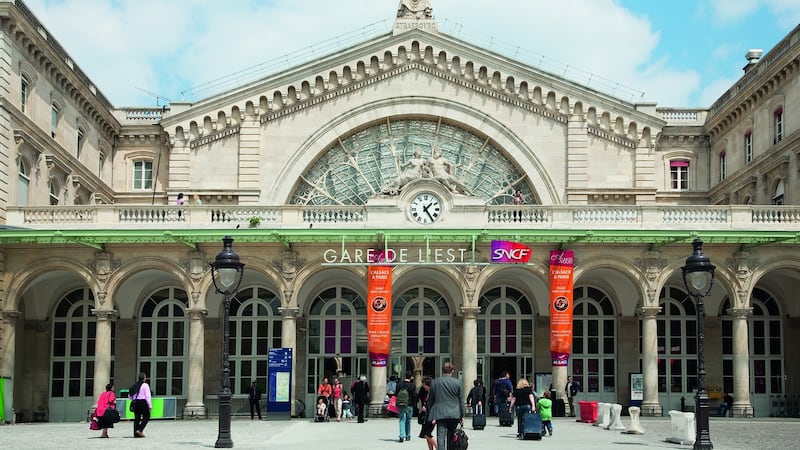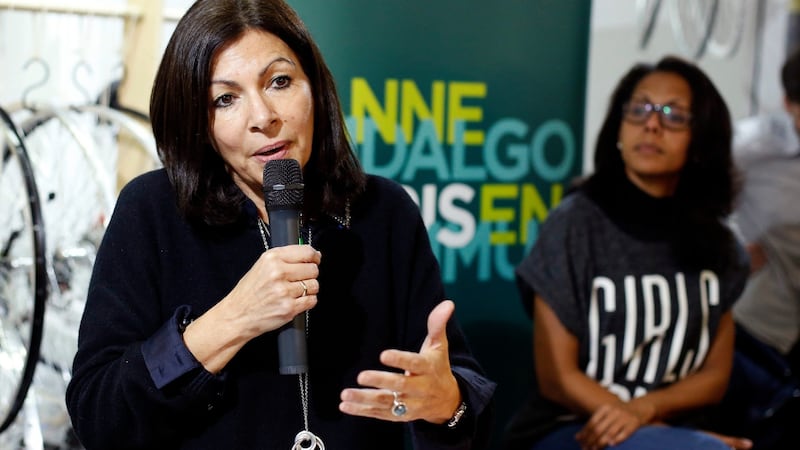To understand the stakes in France’s municipal elections next month, it helps to recall Emmanuel Macron’s May 2017 presidential victory, when he swept nearly 90 per cent of the vote in Paris.
The capital, with its affluent, well-educated population, was the heart of the virtual country known as La Macronie.
On the day of his inauguration, Macron followed protocol, which demands that a new president call on the mayor of Paris. Socialist Party mayor Anne Hidalgo wore black. I suspect Macron decided to wrest the capital from her during her long, angry speech asserting the autonomy of Paris.
Macron called for Benjamin Griveaux. A founding member of the president's La République en Marche, Griveaux left the government in March 2019 to campaign for Hidalgo's job.
Griveaux is, like Macron, a graduate of France’s grandes écoles. The two men were born only eight days apart, 42 years ago. Griveaux is almost a clone of Macron.
So the fact that polls show Griveaux trailing Hidalgo and Rachida Dati, the candidate for the conservative Les Républicains, has set alarm bells ringing in La Macronie.
Another Macroniste, the mathematician Cédric Villani, is splitting the centrist vote by refusing to end his maverick candidacy. And Griveaux is paying the price for last year's gilets jaunes revolts and Macron's unpopular pension reform. Like Macron, he is too well-educated for many French people to warm to him.
In a recent group interview with the Anglo-American Press Association, Griveaux's allusions to welfare systems designed by Bismarck and Beveridge, and to the intelligible and sensible worlds in Socratian philosophy, sent journalists rushing for the Google search button.

Central Park
Like Macron, Griveaux is an ideas man. His most talked-about idea is to move the Gare de l’Est to the northeastern periphery of the city and build a New York-style Central Park in its place. He estimates it would take ten years and €1.5 billion.
“Central Park! That really stuck in people’s minds! Oooh, wow!,” Griveaux says.
Critics mock his pet project on social media. “I propose moving the Gare de Lyon to Lyon. That way the journey will be shorter,” Hidalgo’s campaign manager tweeted.
One internet-user suggested turning disused metro stations into swimming pools. “Would it be possible to move the Seine southward, so I can live on the quays?” another asked. Yet another wanted to “replace Parisian rats with cute squirrels, like in Central Park”. Quite a few mentioned the US television series Friends, whose characters meet up in a bar called the Central Perk.
I too was sceptical of Griveaux's plan, until I heard his explanation. "In France, we're good at identifying problems upstream, but we never deal with them before they happen," he says. "All the experts say the Gare du Nord and the Gare de l'Est will not be able to absorb the number of railway travellers ten years from now."
The Gare du Nord is already undergoing a €600 million renovation by a private consortium. "But at the end of the day, you can have the most beautiful terminal in the world and it will still be saturated," Griveaux continues. "It's a problem of railway tracks. There are 28 sets of tracks at the Gare de l'Est and they cannot absorb all the traffic coming from Strasbourg, Germany, Belgium, the Netherlands and northern Europe as people shift from air travel to trains."

‘Return to nature’
It is impossible to build more railway tracks in Paris without demolishing buildings. And there are already six train stations in Paris, the legacy of the industrial revolution in the mid-19th century. Paris has the highest ratio of train stations per square metre of any European capital, Griveaux says.
The new metropolitan station would also "rebalance the east and west of the capital in terms of economic activity and jobs," he adds. He's been thinking about the project for over a year, and has discussed it with the SNCF railway company and the government. He sees two possible places for the new super station, La Villette and the suburb of Noisy.
Griveaux would maintain traffic at Gare de l’Est for 25,000 passengers daily from Roissy Charles de Gaulle airport only. That would leave 74 acres of disused railway tracks that he would “return to nature”.
Griveaux has turned the project into an argument against Hidalgo. “I’m giving woods to the most densely populated neighbourhood in Paris. I’m not planting at the foot of the Trocadero for tourists,” he says, referring to the incumbent mayor’s promise to create a garden between the Trocadero and the Eiffel Tower, an area that is already landscaped.
“She pretends she’s on the left, and she’s planting the Trocadero for tourists who buy handbags for €5,000 in the avenue Montaigne. I’m planting in the popular neighbourhoods of Paris where kids don’t have trees.”











